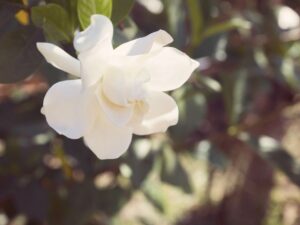How to grow and care for Hibiscus?

Hibiscus are well known for their enormous, dramatic and flamboyant flowers.
They are available in an endless variety of colours, from shades of yellow, orange, red, pink, white and everything in between! There are many different species of Hibiscus, ranging from miniature shrubs to large trees, but, all of them have similar requirements when it comes to growing happy healthy plants
Sunlight and Placement
When planting it’s important to consider that over the first two years most of them will grow to 1.5 – 2M high. All Hibiscus prefer full sunshine, however they also need to be protected from strong winds. When planted in an area too shady they will become leggy and will not flower well.
Hibiscus can also grow well in pots or tubs. Ceramic or terracotta pots work best as plastic, when sitting in the sun for extended periods, can overheat the root system.
Prunning
It’s easy to be afraid of pruning, however, it is essential if you want healthy looking bushes and lots of flowers! Almost all varieties of Hibiscus will only bloom on new wood. When pruning your Hibiscus, first prune any diseased or dead branches from the centre, as well as any crossed over branches. This will allow increased sunlight & airflow to new shoots starting to grow. Next, reduce the overall size of the outer branches at least one-third of the season’s growth. Don’t be alarmed by the bare appearance of your plant after pruning it will bounce back with a vengeance!
Watering/Feed
The secret to success when growing Hibiscus is to keep the soil evenly moist. When blooming they will require large amounts of water. Water your them generously at least once a week. In hot weather water daily, in the colder months water to maintain soil moisture. Potted ones should be watered every 2-3 days, if not everyday.
They respond well to fertilizer, choose one that encourages blooms and is high in nitrogen and potassium. Apply before and throughout the growing season this will help intensify bloom colour and promote healthy growth.
Soil and Drainage
They grow best in well-drained, slightly acidic soil (pH6-6.5). Heavy clay or light sand must be improved with compost and animal manures, even quality soil will require additional organic matter. Mulch the surrounding area with organic mulch, straw, hay or sugarcane ensuring nothing touches the stem. This will help keep the roots cool & moist during summer.
Other great resources
-
 7, Mar, 2025
7, Mar, 202510 Plants That Boost Office Wellbeing and Productivity
Modern offices can feel removed from the natural world. You... -
 20, Feb, 2025
20, Feb, 2025Avoid These 5 Gardenia Growing Mistakes for Stunning Blooms
Gardenias are loved for their sweet fragrance and stunning white... -
 23, Jan, 2025
23, Jan, 2025Creating Harmony: Ideal Companion Plants for Your Gardenias
Gardenias are some of the most beloved plants in Australian...


